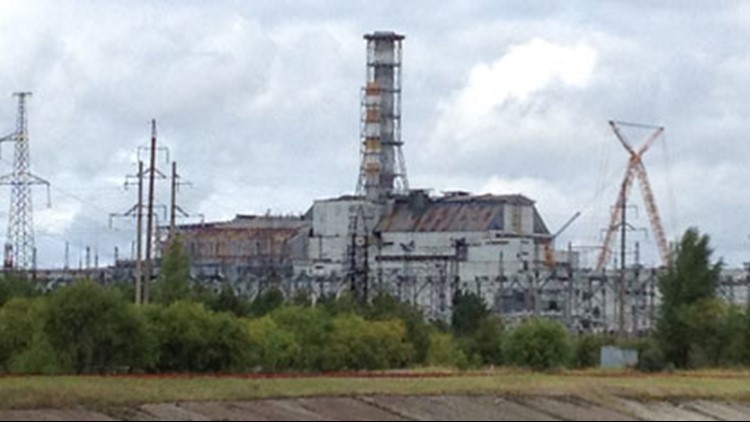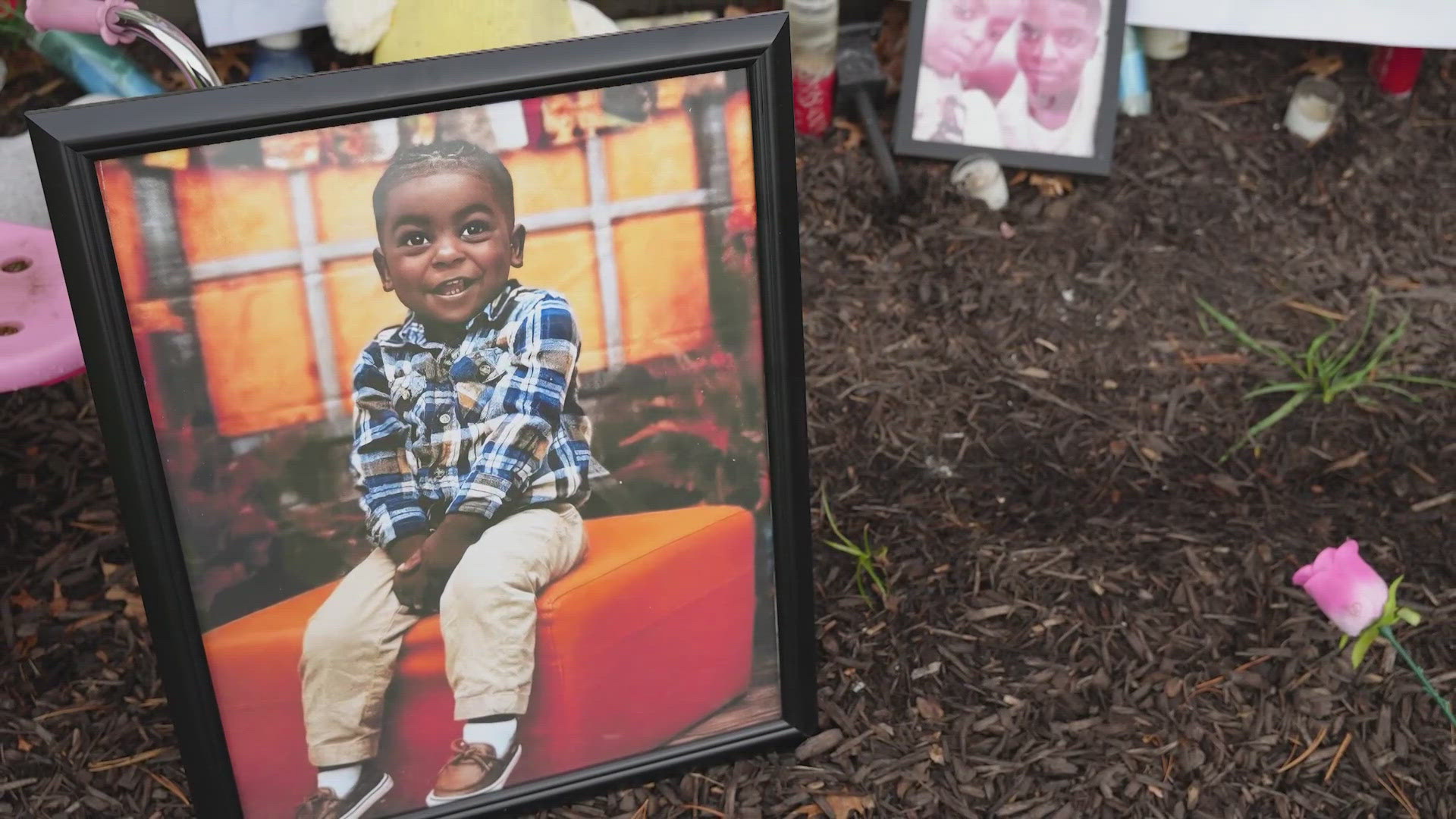Just getting to Chernobyl took a huge effort. Months before leaving Indy, we booked a private tour of the power plant. We took a 90 minute flight from Moscow to Ukraine. We were met by our driver from Solo East Travel.
Since our hotel didn't have a restaurant, we had to stop at a grocery store in Kiev to purchase food for the next two days.
All of the products in the grocery were either Russian or Ukrainian. Huge fish section, too. We bought lunch meat, yogurt, bread, bottled water and cookies.
During our three-hour van drive from the airport to the hotel, our driver played music videos filmed on Chernobyl and shared a documentary of Chernobyl's explosion in 1986.
When we arrived at the Chernobyl Hotel, we were shocked. It was the nicest place we stayed during our two-week trip. The setting resembles Brown County, Indiana. We stayed in a three-room log cabin right next to a small pond. Nice little kitchen, hardwood floors, flat screen TVs and big windows looking out at trees. The funniest sign was posted on the outside of our cabin. "Please keep your radioactive shoes outside." Classic. Our guide caught a fish in the small pond next to our cabin and brought it to us. No, it wasn't glowing. We didn't eat it.
As we unpacked our groceries, we turned on the television.
Plenty of Syrian and Yemen programs. We finally found the BBC on TV. So we didn't have to watch Syria's version of the Kardashians.
We took a stroll to the corner market. Our guide seemed perturbed that I bought Corona beer at the Kiev grocery.
"Why would you buy a Mexican beer in the Ukraine," he asked. Feeling guilty, I bought a warm Ukrainian bottled beer for the equivalent of 40 cents.
Our visit to Chernobyl was mind blowing in every way. We had total access inside "the zone" and toured the so-called ghost village and saw images we will never forget. Did standups within a 9 iron of Reactor 4 that exploded and burned in 1986.
Our tour guide was born two years after the Chernobyl explosion. He was fabulous. I asked him the question everybody would want to know.
"Is Chernobyl safe today?"
"It depends on the purpose. It's not safe to live here but it's good be here for short periods of time. For visitors, for a one-day trip, two-day trip, that's nothing. But, we can't live here. Because we can't use the water and the soil. We can't grow anything to gather mushrooms and berries. We can spend time here but we can't live," said Nicholai.
He described the radiation as the invisible enemy.
"You can't feel it, you can't touch it, you can't taste it. You can measure it with one thing," said Nicholai.
He carried a small yellow device that measured radiation levels everywhere we toured. He found "hot spots" in many locations.
We explored the entire village of Pripyat that evacuated six days after the explosion. It was if someone hit the pause button on life. It felt like we had taken a time machine back to 1986.
Our tour guide said 500 photographers come to Chernobyl every year to take pictures inside the village and many times, items like dolls are moved to create a better photograph.
"They (photographers) need to do the creepy picture. That's why they move stuff," said Nicholai. "People want to show it as creepy place. So, that's why they put the dolls on the beds. Every year, that dolls lies on a different bed. The books and the toys and dolls here, they're staged. It's not like it was left here. Things moving all the time around this building."
We didn't move anything while we toured the abandoned schools and buildings. We photographed everything as it was that day.
"It sounds funny but at least half of people on our planet think Chernobyl is a deadly place with monsters, mutants, no people there, no nature, burned land, it's not true. Just look around. Fresh air, trees, vegetation, animals, birds, fruits on the tree. Everything is here like it should be in a natural condition. Wildlife, nature takes everything back slowly," said Nicholai. "From some sort of view, it's paradise. Not for everyone of course. But, for those people who enjoy nature, peaceful places, it's like a paradise."
"We have no visual mutations. The scientists took some probes of soil, air, water. They cut some animals. They are mutated. But the mutations are on a cell level, so it's invisible. So, it's impossible to see on the first view, is that animal good or not. Some of them are mutated but only tiny mutations. Maybe wrong eye color," said Nicholai. "We're not going to see any five legged wolves. They are not glowing in the dark. They're not with five legs and two heads."
Our tour guide also drove us to a remote village not far from the Chernobyl power plant to meet an elderly farmer and his wife who evacuated after the explosion but came back to live in the same home he built.
They looked like a couple right out of central casting. Ivan Ivanovich was outside cutting wood with an axe when we arrived. We talked about the explosion.
"I remember everything. I was here in this house. I remember that perfectly," said Ivanovich through an interpreter. "Neighbors told me something went wrong in the power plant. The information spread very fast. the government didn't give any official information. The local government gave our family iodine pills. We were waiting for the government to make a decision. We were assured nothing would happen at the power plant and that it was a completely safe facility."
Seven days after the meltdown, the government ordered Ivanovich to evacuate. They returned to the same home in 1988.
"This is my motherland. I was born here. I have to die here."



